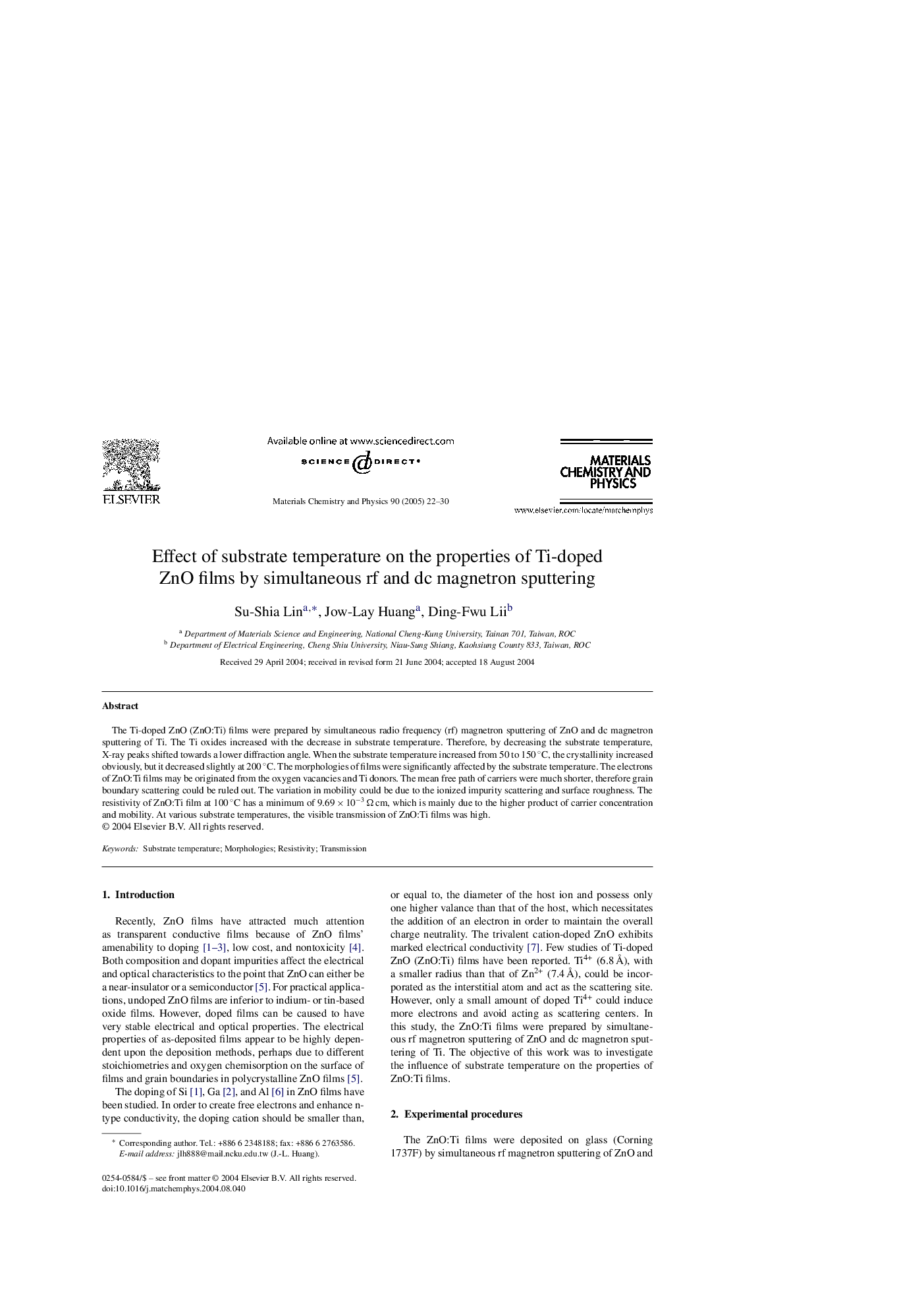| Article ID | Journal | Published Year | Pages | File Type |
|---|---|---|---|---|
| 10638297 | Materials Chemistry and Physics | 2005 | 9 Pages |
Abstract
The Ti-doped ZnO (ZnO:Ti) films were prepared by simultaneous radio frequency (rf) magnetron sputtering of ZnO and dc magnetron sputtering of Ti. The Ti oxides increased with the decrease in substrate temperature. Therefore, by decreasing the substrate temperature, X-ray peaks shifted towards a lower diffraction angle. When the substrate temperature increased from 50 to 150 °C, the crystallinity increased obviously, but it decreased slightly at 200 °C. The morphologies of films were significantly affected by the substrate temperature. The electrons of ZnO:Ti films may be originated from the oxygen vacancies and Ti donors. The mean free path of carriers were much shorter, therefore grain boundary scattering could be ruled out. The variation in mobility could be due to the ionized impurity scattering and surface roughness. The resistivity of ZnO:Ti film at 100 °C has a minimum of 9.69 Ã 10â3 Ω cm, which is mainly due to the higher product of carrier concentration and mobility. At various substrate temperatures, the visible transmission of ZnO:Ti films was high.
Related Topics
Physical Sciences and Engineering
Materials Science
Electronic, Optical and Magnetic Materials
Authors
Su-Shia Lin, Jow-Lay Huang, Ding-Fwu Lii,
